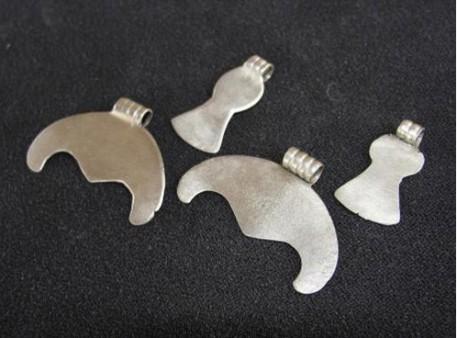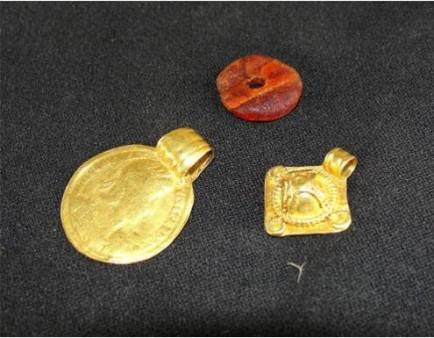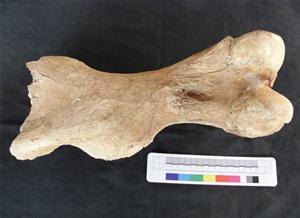PAP - Science and Scholarship in Poland
Source - http://scienceinpoland.pap.pl/en/news/news,406455,archaeologists-in-the-hanged-man-cave.html
Skeletal and crematory graves from the mid-1st millennium, and the remains of representatives of megafauna, living in the present Polish territory during the last Ice Age, have been discovered by archaeologists during the study of the Hanged Man Cave near Kostkowice in the Jastrzębnik Massif in the Kraków-Częstochowa Upland.
"The dead whose bones were found in the cave probably came from the northern coasts of the Black Sea, as evidenced by the characteristic composition of deposits located nearby" - explained Prof. Aleksander Bursche, coordinator of the NCN Maestro project "Migration Period in the Oder and Vistula basin", under which excavations are conducted. "They could include representatives of East Germanic people - Goths" - added the scientist.
Inside the cave, archaeologists have found fragments of at least six skeletons from this period. In their vicinity they discovered pendants made of silver, gold and amber, Roman denarii and solidi, brown and silver clasps and beads of glass and amber, as well as numerous fragments of vessels turned on a wheel.
 Silver pendants from the fourth century, originating from the Black Sea. Photo by M. Rudnicki
Silver pendants from the fourth century, originating from the Black Sea. Photo by M. Rudnicki
 Amber pendant, gold pendant and a solidus with eyelet. Photo by M. Rudnicki
Amber pendant, gold pendant and a solidus with eyelet. Photo by M. Rudnicki
"So far we have not been able to explain the circumstances of the presence of people from so far away in the Upland. Useful for understanding the nature and duration of this presence will be the results of palaeobotanical analyses and samples taken from cultural layers" - said Prof. Bursche.
Puzzling for the researchers are three crematory burials discovered near the cave. They also date back to the mid-1st millennium. According to the archaeologists, these are the first graves from this period discovered in the Jura.
Bodies of the dead had been burned at the stake, from which only some burned bones and few pieces of charcoal were taken. These remains were placed directly in shallow holes in the ground. In one instance, the equipment of the deceased consisted of a bronze clasp, metal belt, a comb made of bronze and pottery fragments. The other two burials contain only fragments of vessels. The researchers speculate that perhaps this situation reflects the social position of the deceased. Currently, it is difficult to determine whether the graves contain the remains of representatives of East Germanic Przeworsk culture or newcomers from the circle of the Gothic cultures.
This is the third season of the work of archaeologists. Excavations leader is Marcin Rudnicki from the Institute of Archaeology of the University of Warsaw. The team includes students and doctoral students of IA UW and Artes Liberales UW, including many from abroad. During the first year, scientists dug through layers of rock debris. Only last year they reached interesting finds. They came across a collection of valuable relics in the form of clasps made of silver and bronze and pendants and beads of glass and amber. Like the ornaments and items of clothing found by treasure hunters in recent years, they probably come from the present-day Ukraine, at the time inhabited by the Gothic communities.
"It is quite a surprising discovery because ties between the Germanic population in the late fourth century to the areas west of the Upper Vistula River have not been considered until now. The nature of these contacts remains a mystery" - added Prof. Bursche.
This year, as part of the Institute of Archaeology UW own research, the Hanged Man Cave was visited by a group of archaeologists and anthropologists, dealing with the oldest traces of human presence on Polish soil. The team was headed by Dr. Małgorzata Kot. In a 4 metres deep excavation pit inside the cave, scientists discovered a very complex sequence of Pleistocene layers from the Ice Age, containing many bones of cave bears, woolly rhinoceros and giant deer. "In Poland there are only a few caves with such a rich Quaternary layer system. Finding traces of hominids in the future seems very likely" - concluded Prof. Bursche.

Humerus of a woolly rhinoceros. Photo by M. Rudnicki